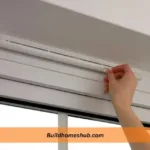Oxygen is essential for human survival; without it, we can only survive for a few minutes. In an enclosed space like a small room, the oxygen supply can quickly deplete if there are no means of replenishment. In this article, we will explore the possibility of running out of oxygen in a small room with the door closed and the factors that can contribute to this. So, can you run out of oxygen in a closed room?
Can You Run Out of Oxygen in a Closed Room?
Yes, it is possible to run out of oxygen in a small room with the door closed if there is no ventilation or other means of oxygen replenishment. The amount of time it takes for this to happen would depend on factors such as the size of the room, the number of people in the room, and the activity level.
In a small room with closed door, the amount of oxygen available is limited and will eventually deplete as people breathe and consume oxygen. Additionally, people and certain activities such as burning candles, incense, or smoking can release carbon dioxide and other pollutants, which can also reduce oxygen levels. The rate at which oxygen is depleted in a closed room will depend on the size of the room and the number of people in it, as well as the rate at which the people and activities in the room consume oxygen.
As the oxygen levels in the room decrease, it can lead to symptoms such as dizziness, headache, fatigue, and in severe cases, loss of consciousness and even death. It is, therefore, important to ensure that small enclosed spaces have adequate ventilation to replenish oxygen and remove pollutants.
Factors That Contribute to Running Out of Oxygen in a Small Room
1. Size of the room
The size of the room is one of the major factors contributing to running out of oxygen in a small room with the door closed. A larger room will have more space for oxygen to circulate and will be less likely to become oxygen-depleted than a smaller room. However, even a larger room will eventually run out of oxygen if no means of replenishment exists.
2. Number of people in the room
The number of people in the room also plays a significant role in the rate at which oxygen is depleted. More people in a room will consume more oxygen and release more carbon dioxide. This can lead to a decrease in the oxygen levels in the room at a faster rate.
3. Activities taking place in the room
Activities such as burning candles, incense, or smoking can release pollutants and reduce oxygen levels. In addition, high-energy activities, such as exercise, can also increase the rate at which people in the room consume oxygen.
How to Prevent Running Out of Oxygen in a Small Room
1. Adequate ventilation
One of the most important ways to prevent running out of oxygen in a small room is to ensure adequate ventilation. This can include opening windows, using exhaust fans, or installing a mechanical ventilation system. This will allow fresh air to circulate, replenish the oxygen supply, and remove pollutants such as carbon dioxide.
2. Monitor oxygen levels
Investing in a device to monitor the oxygen levels in the room can be a valuable tool in preventing oxygen deprivation. These devices are relatively inexpensive and easy to use, and they can alert you to any drops in oxygen levels before they become dangerous.
3. Limit the number of people in the room
The number of people in the room can significantly impact oxygen levels. To prevent running out of oxygen in a small room, it’s best to limit the number of people in the room, especially if the room is not well-ventilated.
4. Be aware of the signs and symptoms of oxygen deprivation
It’s important to be aware of the signs and symptoms of oxygen deprivation, such as dizziness, headache, fatigue, and loss of consciousness. If you or someone else in the room experiences these symptoms, it’s important to take action immediately.
5. Have an emergency plan
It’s important to have an emergency plan in place in case of oxygen deprivation. This can include having a window or door that can be easily opened, having a portable oxygen tank on hand, and knowing the location of emergency exits.
6. Regular maintenance
Regularly check the ventilation system and ensure it is in good working condition. Dust can accumulate over time, and this can affect the efficiency of the ventilation system.
Additional tips and tricks:
- Regularly check for proper ventilation in small enclosed spaces, such as ensuring that vents and air ducts are not blocked and that windows can open.
- Avoid activities that produce pollutants, such as smoking or burning candles, incense in enclosed spaces.
- Always have a way to open a window or door in case of emergency.
- Keep a portable oxygen supply on hand, in case of emergency such as power outages or natural disasters.
- Be aware of the potential dangers of enclosed spaces such as basements, attics, and closets and take precautions accordingly.
Conclusion
Running out of oxygen in a small room with the door closed is a serious issue that can have severe consequences. The size of the room, the number of people in it, and the activities occurring within it all play a role in the rate at which oxygen is depleted.
It is important to ensure that small enclosed spaces have adequate ventilation to replenish oxygen and remove pollutants. In addition, it is crucial to be aware of the signs and symptoms of oxygen deprivation and take necessary actions. Being aware of the potential dangers and taking appropriate precautions can help ensure the safety of those in enclosed spaces.
I hope to help you make the right choices with my content. I am passionate about building new homes and renovations. Follow me, on my socials, I drop nice stuff that may be helpful.











